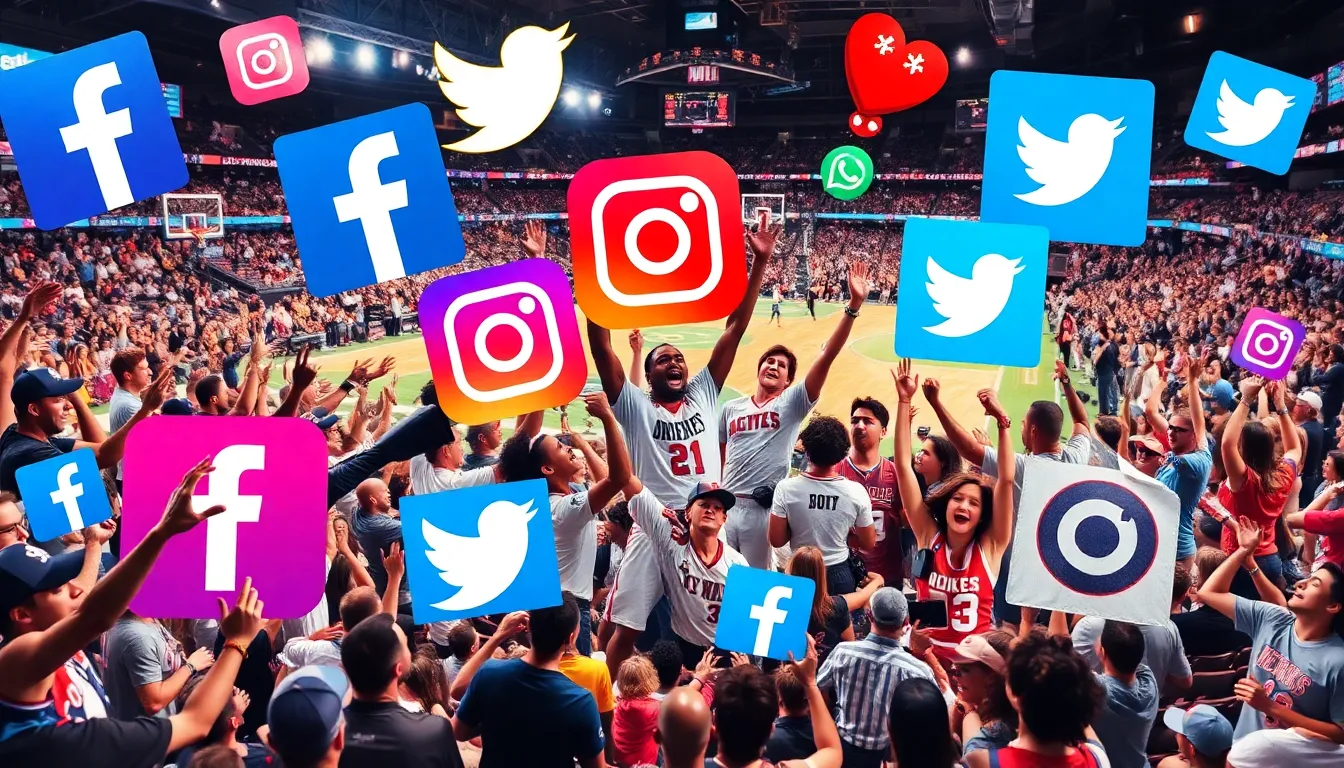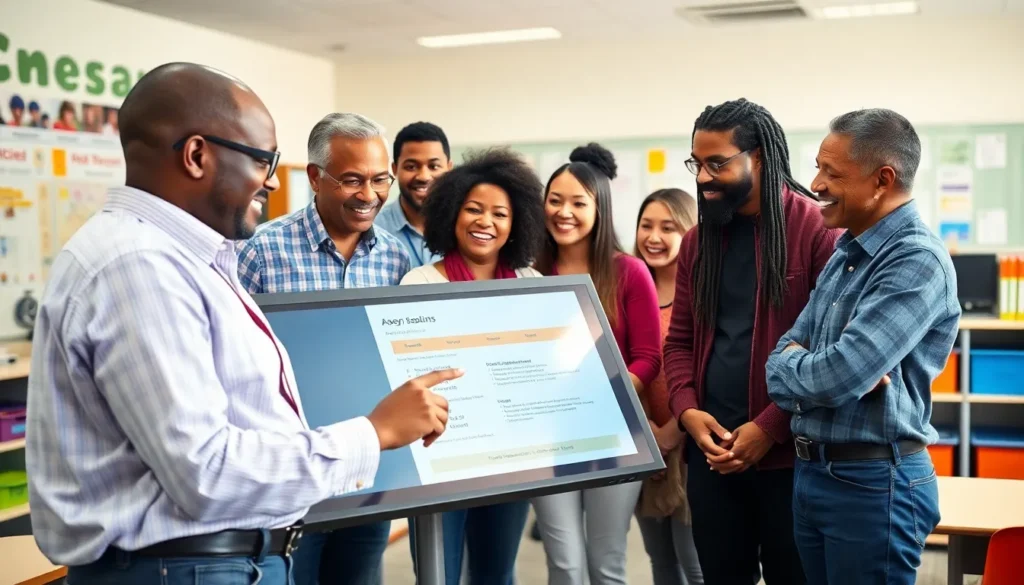Table of Contents
ToggleIn a world where athletes can score a touchdown and go viral in the same play, the intersection of sports and social media is more thrilling than a last-minute game-winning shot. With every tweet, post, and story, fans connect with their favorite teams and players like never before. But which social media platform truly takes the championship for the sports industry?
Overview of Social Media in Sports
The integration of social media into the sports industry has transformed fan engagement and athlete branding. Platforms like Twitter, Instagram, and TikTok serve as vital tools for real-time updates, interactions, and storytelling. Fans engage with teams and athletes instantly, strengthening their loyalty and connection.
Athletes leverage social media to share personal experiences and behind-the-scenes content, which humanizes them and builds authenticity. Additionally, social media campaigns around key events or milestones can amplify visibility and drive enthusiasm, reaching broader audiences than traditional media.
Statistics demonstrate that 47% of sports fans prefer social media as their main source for sports news, emphasizing its relevance. Engagement rates for sports-related posts can surpass those of other industries, with Instagram accounting for 70% of sports interactions. Notably, TikTok’s user base skews younger, making it essential for targeting Gen Z fans.
Collaborations between brands and sports teams further illustrate the platform’s impact. Sponsored posts and influencer partnerships create opportunities for monetization and expanded reach. Platforms also allow for interactive content, such as polls or live Q&A sessions, inviting fan participation directly.
As the sports landscape evolves, so do the strategies surrounding social media use. Adaptation to emerging trends, including live streaming and augmented reality experiences, ensures ongoing relevance. Data shows that content with video receives 48% more engagement than static images, highlighting the importance of dynamic content in attracting attention.
Ultimately, these platforms not only enhance the visibility of sports but also create communities where fans can celebrate their passions. The relationship between sports and social media continues to grow, shaping how audiences consume and interact with sports content.
Major Social Media Platforms

Social media platforms play a critical role in the sports industry. Each platform offers unique features that enhance connection and engagement with fans.
Facebook serves as a powerful tool for athletes and sports organizations. Users engage with teams through live event coverage and community groups. It boasts 2.9 billion monthly active users, making it a prime space for sports-related content. Teams benefit from targeted advertising to reach specific demographics. Sharing game highlights and exclusive interviews fosters deeper connections with fans. Interactive features like Facebook Live provide real-time engagement opportunities during events.
Twitter excels in delivering real-time updates about sports. Athletes and teams utilize it to share news and interact with fans instantly. The platform’s character limit encourages concise, impactful communication, enhancing information dissemination. With 450 million monthly active users, Twitter remains vital for quick fan engagement during games. Hashtags create conversations around events and amplify campaigns. Notably, 80% of users follow sporting events on Twitter, emphasizing its importance in the sports industry.
Instagram captures the visual storytelling aspect of sports. High engagement rates, with 70% of interactions coming from sports content, showcase its effectiveness. Athletes leverage the platform for behind-the-scenes glimpses, creating authenticity. Stories and Reels allow for dynamic content showcasing daily training and personal moments. Brands collaborate with athletes for sponsored content and promotions, amplifying reach. Instagram emphasizes visual appeal, making it essential for building athlete brands and fan loyalty.
TikTok
TikTok has emerged as a significant platform for engaging younger audiences. Its video-first approach resonates with Gen Z, a key demographic for the sports industry. Engaging challenges, trends, and behind-the-scenes clips attract millions of views. Sports teams and athletes utilize TikTok for creative content that showcases their personalities. The platform’s algorithm promotes viral trends, driving visibility for sports-related videos. Statistical data shows that video content on TikTok garners 48% more engagement than static posts, affirming its impact.
Engagement Strategies in Sports
Engagement strategies play a crucial role in the sports industry, enhancing fan loyalty and interaction through social media platforms.
Fan Interaction
Real-time engagement significantly boosts connections between fans and sports teams. Athletes can interact directly with followers, prompting discussions through comments and live Q&A sessions. Statistics indicate that 47% of sports fans prefer social media for updates, underscoring its importance. Platforms like Twitter rapidly share live scores or highlight plays, making fans feel part of the action. Instagram’s interactive polls and stories foster instant feedback and engagement, allowing fans to express opinions on performances or upcoming games. TikTok encourages creative fan challenges that deepen community involvement, reflecting a culture of participation.
Content Creation
Compelling content lies at the heart of effective engagement. Visual storytelling on Instagram showcases athletes’ journeys and behind-the-scenes glimpses that resonate with followers. TikTok thrives on short video formats, with trends often going viral, capturing Gen Z’s interest through innovative and entertaining content. Authenticity emerges as a key factor, with athletes sharing personal anecdotes that foster relatability. Campaigns aligned with major sporting events drive significant audience engagement, as fans eagerly participate and share related content. Attention to quality and relevance ensures that posts capture maximum visibility, reinforcing brand identity within the sports landscape.
Analysis of Platforms
The impact of social media on the sports industry is profound. Different platforms excel in unique ways, shaping fan experiences and connecting athletes with audiences.
Success Stories
Numerous athletes have successfully utilized social media to enhance their careers. LeBron James, for instance, effectively engages with fans through Twitter and Instagram, sharing personal stories and professional highlights. His social media presence contributes to brand partnerships and promotes causes he supports. Serena Williams leverages Instagram for storytelling, showcasing her journey as a mother and athlete while cultivating a loyal fanbase. Moreover, platforms amplify the visibility of emerging talent, allowing young athletes to showcase their skills to scouts and organizations. These examples illustrate how social media becomes an avenue for athletes to grow their personal brands and interact authentically with fans.
Case Studies
Various sports teams have also experienced significant growth through social media strategies. For example, the Golden State Warriors utilize Instagram’s visual appeal to share stunning game highlights and behind-the-scenes content, resulting in increased fan engagement. Their effective use of hashtags and unique visuals fosters a community among followers. Similarly, the Dallas Cowboys excel on Twitter by providing real-time updates and engaging fans during live events. This approach enhances their visibility and solidifies their brand presence in a competitive market. Successful campaigns demonstrate how sports organizations can maximize their reach and strengthen connections with their audience by strategically employing social media platforms.
The interplay between social media and the sports industry is undeniable. Each platform offers unique advantages that cater to different aspects of fan engagement and athlete branding. While Instagram shines in visual storytelling and TikTok captures the attention of younger audiences, Twitter remains essential for real-time updates and interactions.
Ultimately, the best platform for the sports industry depends on specific goals and target audiences. By leveraging the strengths of each platform, athletes and teams can create meaningful connections with fans, amplify their reach, and enhance their overall presence in the competitive sports landscape. The future of sports engagement will undoubtedly continue to evolve as social media plays an increasingly pivotal role.










